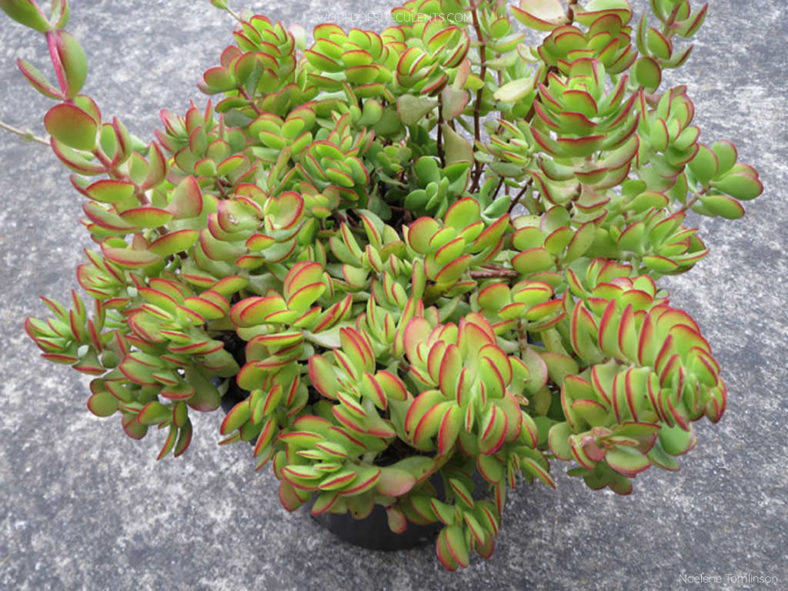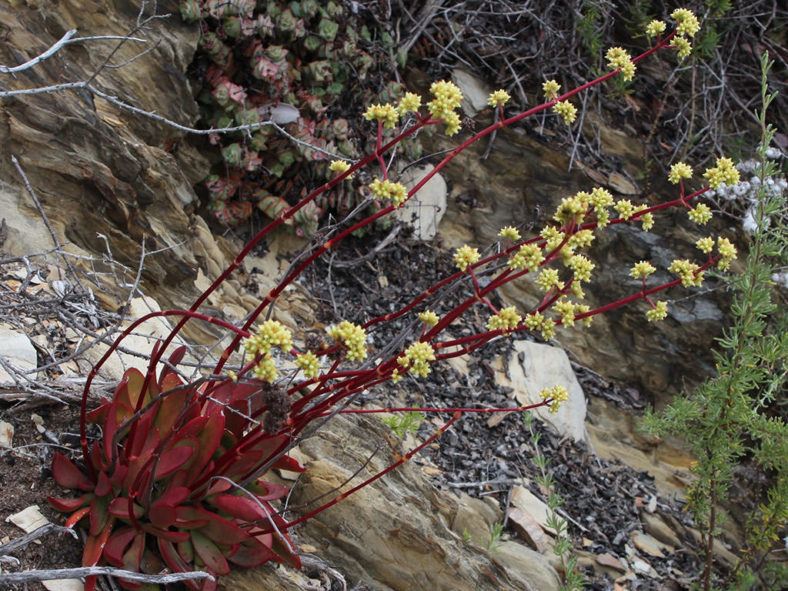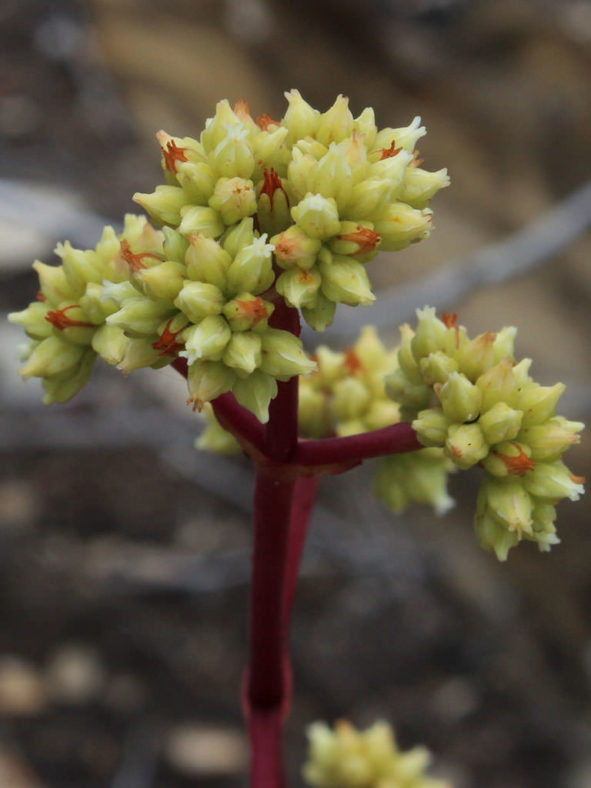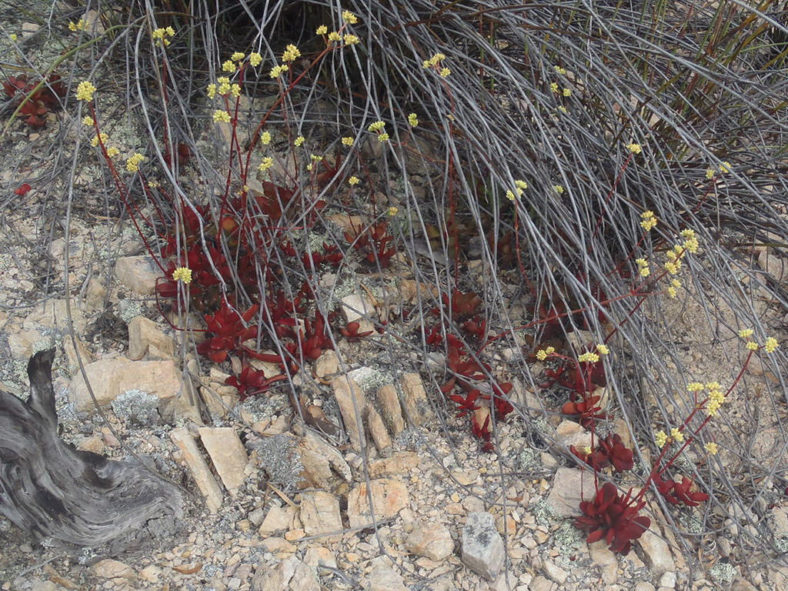Scientific Name
Crassula atropurpurea (Haw.) D.Dietr.
Common Name(s)
Purple Crassula, Purple Stonecrop
Synonym(s)
Cotyledon lutea, Crassula clavifolia, Globulea atropurpurea, Globulea clavifolia, Sedum arboreum
Scientific Classification
Family: Crassulaceae
Subfamily: Crassuloideae
Genus: Crassula
Etymology
The specific epithet "atropurpurea" (pronounced "at-ro-pur-PURR-ee-uh") means "dark purple" and refers to the color of the leaves and branches of this species.
Origin
The native range of Crassula atropurpurea extends from southern Namibia to the Karoo and Port Elizabeth in South Africa. It grows on stony slopes, gravelly flats, or sand among bushes.
Description
Crassula atropurpurea is a highly branched succulent shrublet with erect to decumbent branches that bear green to yellowish-green or tinged red or purple, rarely deep red or purplish-red leaves. It can grow up to 2 feet (60 cm) tall. The basal branches are woody, while the younger ones are fleshy, hairy, and green to purplish, with old leaves deciduous. The leaves are usually glabrous, oblanceolate to obovate, rarely linear-elliptic, flattened, and slightly convex above and below, measuring up to 1.2 inches (3 cm) in length and 1 inch (2.5 cm) in width.
The flowers are small, tubular, and cream-colored. They appear in spring and summer in globular clusters in an elongated, 3-many-branched inflorescence on pubescent peduncles that can grow up to 169 inches (40 cm) long.

Varieties of Crassula atropurpurea
- Crassula atropurpurea var. anomala
- Crassula atropurpurea var. atropurpurea
- Crassula atropurpurea var. cultriformis
- Crassula atropurpurea var. muirii
- Crassula atropurpurea var. watermeyeri
How to Grow and Care for Crassula atropurpurea
Light: C. atropurpurea prefers full sun to partial shade. However, intense afternoon sun in the hottest period of summer can burn the leaves of the plant. Therefore, a place with morning sun and afternoon shade would be perfect. Indoors, place your plant in a window that receives at least 6 hours of direct sunlight.
Soil: This plant is not particular about soil pH but requires very porous soil with excellent drainage. Use commercial potting soil mixes designated for succulents, or mix your own.
Temperature: Like most Crassulas, this succulent can tolerate short-term freezing, but prolonged exposure to extremes of cold or heat will cause it to lose leaves and eventually die. C. atropurpurea can withstand temperatures as low as 30°F (-1.1°C). USDA Plant Hardiness Zones 10a to 11b, 30°F to 50°F (-1.1°C to 10°C).
Watering: Avoid overwatering using the "soak and dry" method, where the soil is soaked with water, slowly drained, and left to dry out before watering again. Reduce watering in winter. Potted plants require more frequent watering than those in the ground.
Fertilizing: C. atropurpurea does not need much feeding, but will benefit from a small amount of organic fertilizer in mid-spring when it starts actively growing.
Repotting: Repot as needed, preferably in spring, at the beginning of the active growth period. Ensure the soil is dry before beginning the repotting process.
Propagation: This succulent is typically propagated from leaves or stem cuttings. It can also be grown from seeds and offsets. The easiest way to propagate C. atropurpurea is from a single leaf, while using stem cuttings is the fastest way to obtain a decent-sized plant. These processes are most successful at the beginning of the plant's active growth period. Sow the seeds in the spring or summer.
Learn more at How to Grow and Care for Crassula.
Toxicity of Crassula atropurpurea
C. atropurpurea is nontoxic to people and pets.
Links
- Back to genus Crassula
- Succupedia: Browse succulents by Scientific Name, Common Name, Genus, Family, USDA Hardiness Zone, Origin, or cacti by Genus
Photo Gallery
Click on a photo to see a larger version.


